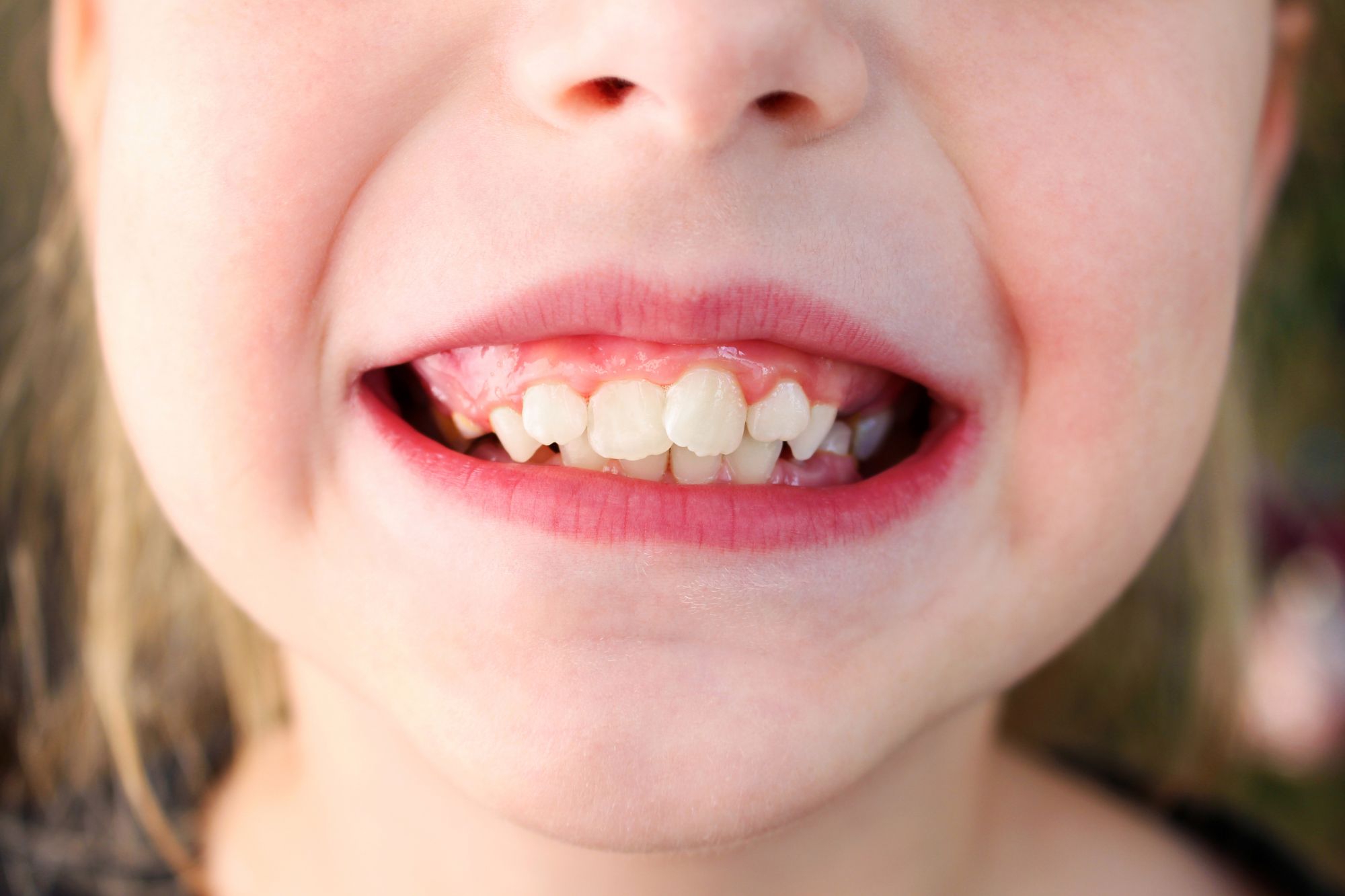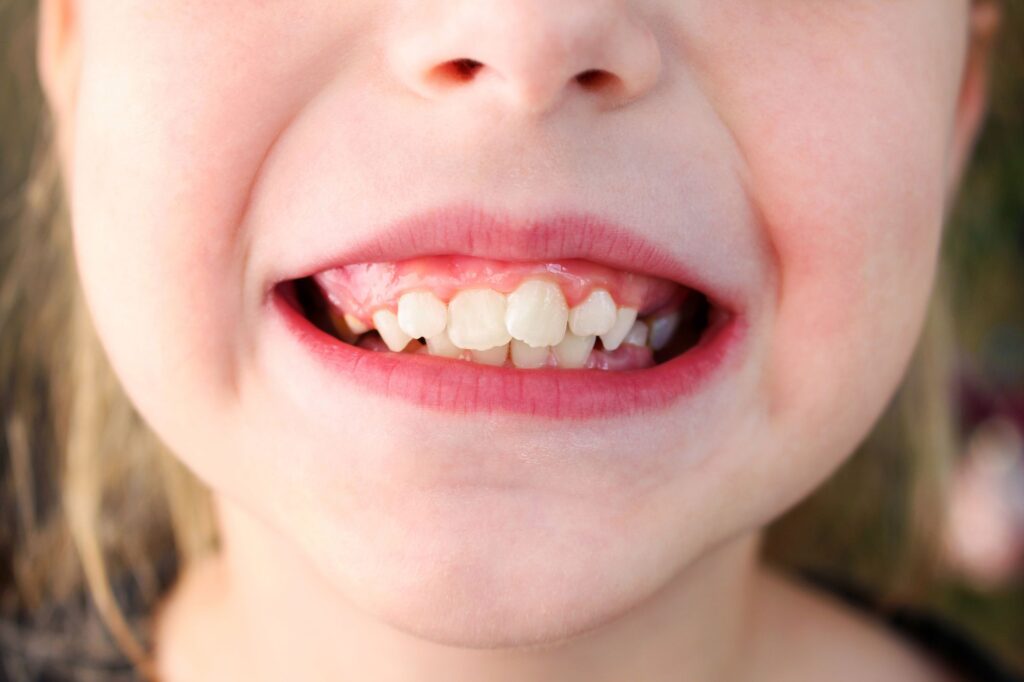Understanding Crowded Teeth: Causes and Solutions

Table of Contents

Photo by Canva
Having crowded teeth, also referred to as overlapping teeth, is a common dental issue that affects both children and adults. It occurs when there is insufficient space in the mouth for all the teeth to align properly. Not only can crowded teeth impact the appearance of your smile, but they can also cause various oral health problems if left untreated. In this comprehensive guide, we will delve into the causes of crowded teeth, explore the potential risks associated with them, and discuss the available treatment options. So, let's dive in and discover how to address the issue of crowded teeth and achieve a healthier, more confident smile.
What Are Crowded Teeth?
Crowded teeth, or dental crowding, is a dental malposition that occurs when there is a lack of space in the mouth for the teeth to grow and align correctly. This can result in teeth that are twisted, displaced, or overlapping. While crowded teeth are commonly observed during childhood when baby teeth make way for permanent teeth, adults can also experience this issue. It's important to note that crowded teeth not only impact the aesthetics of your smile but can also pose oral health challenges.
Understanding the Causes of Crowded Teeth
The causes of dental crowding can vary, and they are often a combination of genetic and environmental factors. Some of the common causes include:
1. Genetics:
Genetics play a significant role in the development of crowded teeth. If you have a small jaw or your parents and siblings have crowded teeth, there is a higher likelihood that you may also experience this condition.
2. Thumb Sucking and Oral Habits:
Certain oral habits, such as thumb sucking or prolonged pacifier use, can contribute to the development of dental crowding. These habits can affect the natural growth and alignment of the teeth.
3. Large Teeth and Small Jaw:
When the size of your teeth exceeds the available space in your jaw, overcrowding can occur. This can result in teeth that are forced to grow in unnatural positions.
4. Retaining Baby Teeth:
If baby teeth are not lost at the appropriate time, it can disrupt the eruption of permanent teeth and lead to overcrowding. Keeping baby teeth beyond their normal lifespan can prevent permanent teeth from erupting properly.
5. Abnormal Tooth Growth:
Certain conditions, such as supernumerary teeth (extra teeth), can disrupt the natural alignment of the teeth and contribute to crowding.
6. Jaw Irregularities:
Issues with the size or shape of the jaw can also contribute to dental crowding. A narrow upper jaw or a misaligned bite can create insufficient space for the teeth to align properly.
The Risks of Untreated Crowded Teeth
While some individuals may consider crowded teeth only as a cosmetic concern, it's crucial to understand the potential risks associated with untreated crowding. Failure to address crowded teeth can lead to various oral health problems, including:
1. Difficulty in Proper Oral Hygiene:
Crowded teeth can make it challenging to clean all surfaces of the teeth effectively. This can result in the accumulation of plaque and bacteria, increasing the risk of tooth decay, cavities, and gum disease.
2. Gum Disease and Periodontal Problems:
Overlapping teeth can create crevices and tight spaces where plaque and bacteria can thrive. These conditions can contribute to gum inflammation, gum disease, and other periodontal problems.
3. Premature Wear and Damage:
When teeth are misaligned or overlapped, they can experience abnormal stresses during biting and chewing. Over time, this can lead to premature wear, tooth damage, and even tooth loss.
4. Bite Problems and Jaw Alignment Issues:
Crowded teeth can also impact the alignment of your bite. This can result in difficulties with proper jaw function, such as chewing and speaking. Additionally, bite problems can lead to temporomandibular joint (TMJ) disorders and related symptoms like jaw pain and headaches.
5. Self-Esteem and Confidence:
The appearance of crowded teeth can affect your self-esteem and confidence. Individuals with crowded teeth may feel self-conscious about their smile, leading to a negative impact on their overall well-being.
Treating Crowded Teeth: Solutions and Treatment Options
The good news is that dental crowding can be effectively treated with various orthodontic interventions. The appropriate treatment option for you will depend on the severity of your crowding, your age, and your oral health condition. Let's explore some common treatment options for crowded teeth:
1. Orthodontic Braces:
Traditional braces are a reliable and effective solution for correcting crowded teeth. They involve the use of metal brackets and wires to gradually shift the teeth into their proper positions. Braces are commonly recommended for children and adults with moderate to severe crowding.
2. Clear Aligners:
Clear aligner have gained popularity as a discreet alternative to traditional braces. They use a series of clear, removable aligners to gradually align the teeth. Clear aligners are particularly suitable for individuals with mild to moderate crowding.
3. Dental Veneers:
In cases where the crowding is primarily a cosmetic concern, dental veneers can be an option. Veneers are thin, custom-made shells made of porcelain or composite resin that are bonded to the front surface of the teeth. They can improve the appearance of dental crowding by creating the illusion of proper alignment.
4. Tooth Extraction:
In severe cases of overcrowding, tooth extraction may be necessary to create space for proper alignment. This approach is often combined with orthodontic treatment to ensure the remaining teeth can be aligned correctly.
5. Jaw Expansion:
For individuals with a narrow upper jaw contributing to crowding, orthodontic treatment may involve palatal expansion. This technique gradually widens the upper jaw, creating more space for the teeth to align properly.
6. Retainers:
Following orthodontic treatment, the use of retainers is crucial to maintain the results and prevent relapse. Retainers help to ensure that the teeth remain in their corrected positions and prevent crowding from recurring.
It's important to note that the best treatment option for your specific case should be determined by a qualified orthodontist or dentist. They will evaluate your oral health, assess the severity of crowding, and recommend the most suitable treatment plan tailored to your needs.
Preventing Crowded Teeth
While some factors contributing to dental crowding, such as genetics, cannot be controlled, there are preventive measures that can help minimize the risk of overcrowding. These include:
1. Early Orthodontic Evaluation:
Children should have an early orthodontic evaluation by the age of 7. This allows orthodontists to monitor dental development and identify any potential issues, including crowded teeth, at an early stage.
2. Breaking Oral Habits:
Discourage thumb sucking, prolonged pacifier use, or other oral habits that can affect proper tooth alignment.
3. Good Oral Hygiene Practices:
Maintain a consistent oral hygiene routine, including regular brushing, flossing, and visits to the dentist. Good oral hygiene can help prevent tooth decay, gum disease, and other oral health problems associated with dental crowding.
4. Timely Loss of Baby Teeth:
Ensure that baby teeth are lost at the appropriate time to allow permanent teeth to erupt properly. If baby teeth are retained beyond their normal lifespan, it can disrupt the alignment of permanent teeth.
Seeking Professional Care for Crowded Teeth
If you or your child are experiencing dental crowding, it's essential to seek professional care from a qualified orthodontist or dentist. They will assess your specific situation, provide an accurate diagnosis, and recommend the most appropriate treatment options. Remember, addressing crowded teeth not only improves the aesthetics of your smile but also promotes better oral health and overall well-being.
Dr. McVey is dedicated to providing personalized and compassionate care. He understand the concerns and challenges associated with crowded teeth and will work closely with you to develop a customized treatment plan that aligns with your goals and preferences. Schedule a consultation with us today and take the first step towards achieving a healthier, more confident smile.
Additional Information: Causes of crowded teeth
While genetics play a significant role in the development of crowded teeth, other factors can contribute to this condition. Some additional causes of crowded teeth include:
- Delayed loss of primary (baby) teeth: When baby teeth are not lost at the appropriate time, it can lead to a lack of space for permanent teeth to erupt properly.
- Retaining baby teeth for too long: Keeping baby teeth beyond their normal lifespan can prevent the eruption of permanent teeth and contribute to crowding.
- Tongue thrusting: Persistent tongue thrusting against the front teeth can disrupt their alignment and contribute to crowding.
- Mouth breathing: Breathing through the mouth instead of the nose can impact the development of the jaw and lead to dental crowding.
- Trauma or injury to the mouth: Accidents or injuries that affect the teeth or jaw can result in misalignment and crowding.
- Poor oral habits: Poor oral habits, such as nail-biting or chewing on objects, can put pressure on the teeth and contribute to crowding.
It's important to note that each case of crowded teeth is unique, and the causes may vary. A thorough evaluation by a dental professional is necessary to determine the specific factors contributing to your individual case of crowded teeth.
Remember, seeking professional care and early intervention are key to addressing crowded teeth effectively and preventing further complications. Your oral health professional will guide you through the treatment process and provide the necessary support to achieve a beautiful, aligned smile.
Important Links
https://www.diamondbraces.com/conditions/crowding/
https://smile2impress.com/us/blog/crowded-teeth-how-to-fix
https://www.sarasotadentistry.com/dental-blog/what-causes-crowded-teeth-and-how-to-fix-them/
https://smile2impress.com/uk/blog/crowded-teeth
https://www.amorthodontics.com/blog/crowding-spacing-of-the-teeth/
The information available on the Website is for general health information only and is not intended to be a substitute for professional medical advice, diagnosis or treatment. You should not rely exclusively on information provided on the Website for your health needs. All specific medical questions should be presented to your own health care provider and you should seek medical advice regarding and before making any changes related to your health.
If you choose to use the information available on the Website without prior consultation with and consent of your physician, you are agreeing to accept full responsibility for your decisions and agreeing to hold harmless Randall K. McVey, DMD PA, its agents, employees, contractors, and any affiliated companies from any liability with respect to injury or illness to you or your property arising out of or connected with your use of this information.
MedicAL DISCLAIMER
Patient Portal
help
Disclaimers
HIPAA
Accessibility
Privacy Policy & Cookie Policy
Terms & Conditions